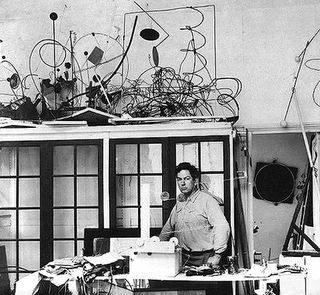Monday, July 3
Sunday, July 2
Sunday, April 16
Tuesday, April 11
Reification
While thinking about what is authentic and how we have lost our collective souls to the simulacrum I came across this reading list for culture theory. My idea of a great summer day, read a little and then go for a ride on your hand made Pereira bike.
American Studies Syllabus Library - Shank: "THEORIZING AMERICA
Barry Shank (University of Kansas)
This course is an intensive reading seminar, intended to provide an introduction to the theoretical debates regarding the study of culture that have taken place in the last twenty years. We will use the seminar format to mutually challenge, support and encourage each other in our struggles to read, think, speak, and write about these positions. You will be required to read and think about a significant bulk of material (150-200 pp.) each class meeting. As part of that requirement, you will turn in a brief 2-4 page response to each class's readings by 5:00 pm the Tuesday before we discuss that reading. You will also be expected to take an active role in the class discussion. The final will be in the form of a take-home exam that will require you to synthesize and use the material of the course. "
American Studies Syllabus Library - Shank: "THEORIZING AMERICA
Barry Shank (University of Kansas)
This course is an intensive reading seminar, intended to provide an introduction to the theoretical debates regarding the study of culture that have taken place in the last twenty years. We will use the seminar format to mutually challenge, support and encourage each other in our struggles to read, think, speak, and write about these positions. You will be required to read and think about a significant bulk of material (150-200 pp.) each class meeting. As part of that requirement, you will turn in a brief 2-4 page response to each class's readings by 5:00 pm the Tuesday before we discuss that reading. You will also be expected to take an active role in the class discussion. The final will be in the form of a take-home exam that will require you to synthesize and use the material of the course. "
Saturday, March 4
Friday, May 27
Dreaming the holistic corporocracy
I will explain later when I update this post how my dream about a disciplined workforce lovingly engaged in composting the detritus of the consumer society was connected to Anastasia's post about a sea change in the way business views the consumer.
Saturday, May 14
fireflies organic wireless network
In mid July the field next to our house is full of flashing fireflies. On a foggy evening last summer my friend Kimberly walked across the field in a light mist and appeared to float across the surface surrounded in flickering light. There was a glow of moonlight illuminating the mist as well...easy to see how an older culture might have seen this as mystical. What mysteries and miracles surround us now? From one source I found this.
WHY DO FIREFLIES FLASH? Surely not just to delight us. Fireflies have been flashing for millions of years, long before we humans were around. The flashes are signals in a courtship conversation between males and females. Unlike crickets where only the male chirps, both male and female fireflies talk to each other by flashes. Their conversation is designed so that the flying male can determine whether he is talking to a female, where she is located, and most importantly, whether she is a female of his species. The stationary female also wants to identify a male of her species and attract him with her flash code, unique to her species. The code is carried in the total number of flashes, the duration of each flash, and in the time between flashes. So, studying fireflies flash behavior can we learn more about the brain of an insect that we can actually "talk to"?
John Schimmel is an inventor/ researcher who has developed a wireless network of led lights that function kind of like night lights, allowing people to signal from room to room much like fireflies do. I will write more about what this means to me in another post.
WHY DO FIREFLIES FLASH? Surely not just to delight us. Fireflies have been flashing for millions of years, long before we humans were around. The flashes are signals in a courtship conversation between males and females. Unlike crickets where only the male chirps, both male and female fireflies talk to each other by flashes. Their conversation is designed so that the flying male can determine whether he is talking to a female, where she is located, and most importantly, whether she is a female of his species. The stationary female also wants to identify a male of her species and attract him with her flash code, unique to her species. The code is carried in the total number of flashes, the duration of each flash, and in the time between flashes. So, studying fireflies flash behavior can we learn more about the brain of an insect that we can actually "talk to"?
John Schimmel is an inventor/ researcher who has developed a wireless network of led lights that function kind of like night lights, allowing people to signal from room to room much like fireflies do. I will write more about what this means to me in another post.
Thursday, March 3
authenticity in media
"Reporting America's Story," NBC's slogan, is what Hunter Thompson actually did before the phrase was downsized into a vacuous marketing strategy. As for Mr. Rather, he gave a valedictory interview to Ken Auletta of The New Yorker in which he said, "The one thing I hope, and I believe, is that even my enemies think that I am authentic." The bar is so low these days that authenticity may well constitute a major journalistic accomplishment in itself.
FRANK RICH
Gonzo Gone, Rather Going, Watergate Still Here
FRANK RICH
Gonzo Gone, Rather Going, Watergate Still Here
Monday, February 21
craft in the digital world
Interaction design keeps showing up in architecture and design articles. Uday Gajendar has written an interesting essay about the nature of craft in digital design and in particular, Icons. I found this article at Bruce Sterlings Giant Ant
“Discussing craft as a value of the user-centered process will expand upon typical issues confronting designers, highlighting matters of moral value, innovative potential, and aesthetic character.”
Icons as problems of craft
The craftiness of it all…
So, what is craft? A quick (and somewhat simplified) stroll through its history will help, with guidance from Malcolm McCullough’s Abstracting Craft. Arising from old English “craeft”—for strength and power—craft was the province of tradesmen, smiths, and guilds skilled in the manual production of goods.[7] Craft was plying one’s trade to materials like metal or wood, devoting significant time and effort to creating objects of unique worth. This is in contrast to products of mass industrialization and distribution, created via mechanized means under the inhumane conditions of factories and mines.
Mass-produced goods gave rise to the social unrest of the early 20th century and the critical philosophies of Marx and others, which emphasized the value of the human worker in regards to his output. This suggested the primacy of relationships between the eye, hand, and mind, and tools and materials. In the UK, William Morris led the noble Arts & Crafts movement to resurrect handiwork aesthetics and values of material economy and moral virtue. Americans saw this with Shaker furniture, which was borne of homespun simplicity. Amidst the tumultuous changes of the ensuing “machine age” of the Industrial Revolution, craft as a practice came to be perceived as hobby-like amateurism (think of the crafts section at your local Wal-Mart), while art became a search for loftier values removed from technique. Meanwhile, bold, fast machinery suggested high quality and “futuristic” production. Remember “streamlined” refrigerators, phones, and car tailfins of the first half of the 20th century?[8]
However, from Eames furniture to Rand’s logos to Apple consumer products, personal craftsmanship has resurged as a signifier of commercial design achievement. Consumers and BusinessWeek alike have applauded the high quality of the iPod, Mini Cooper, Nike watches, OXO utensils, and so forth. Craft remains “skilled labor applied towards practical ends.”
“Discussing craft as a value of the user-centered process will expand upon typical issues confronting designers, highlighting matters of moral value, innovative potential, and aesthetic character.”
Icons as problems of craft
The craftiness of it all…
So, what is craft? A quick (and somewhat simplified) stroll through its history will help, with guidance from Malcolm McCullough’s Abstracting Craft. Arising from old English “craeft”—for strength and power—craft was the province of tradesmen, smiths, and guilds skilled in the manual production of goods.[7] Craft was plying one’s trade to materials like metal or wood, devoting significant time and effort to creating objects of unique worth. This is in contrast to products of mass industrialization and distribution, created via mechanized means under the inhumane conditions of factories and mines.
Mass-produced goods gave rise to the social unrest of the early 20th century and the critical philosophies of Marx and others, which emphasized the value of the human worker in regards to his output. This suggested the primacy of relationships between the eye, hand, and mind, and tools and materials. In the UK, William Morris led the noble Arts & Crafts movement to resurrect handiwork aesthetics and values of material economy and moral virtue. Americans saw this with Shaker furniture, which was borne of homespun simplicity. Amidst the tumultuous changes of the ensuing “machine age” of the Industrial Revolution, craft as a practice came to be perceived as hobby-like amateurism (think of the crafts section at your local Wal-Mart), while art became a search for loftier values removed from technique. Meanwhile, bold, fast machinery suggested high quality and “futuristic” production. Remember “streamlined” refrigerators, phones, and car tailfins of the first half of the 20th century?[8]
However, from Eames furniture to Rand’s logos to Apple consumer products, personal craftsmanship has resurged as a signifier of commercial design achievement. Consumers and BusinessWeek alike have applauded the high quality of the iPod, Mini Cooper, Nike watches, OXO utensils, and so forth. Craft remains “skilled labor applied towards practical ends.”
Wednesday, February 16
Universal Design
The Center for Universal Design encourages awareness and development of environments that don't isolate people by physical barriers. "Universal design is the design of products and environments to be usable by all people, to the greatest extent possible, without the need for adaptation or specialized design" "The intent of the universal design concept is to simplify life for everyone by making products, communications, and the built environment more usable by more people at little or no extra cost. The universal design concept targets all people of all ages, sizes and abilities."
sculpture from basic material
Alexander Calder (1898-1976), whose illustrious career spanned much of the 20th century, is the most acclaimed and influential sculptor of our time. Born in a family of celebrated, though more classically trained artists, Calder utilized his innovative genius to profoundly change the course of modern art. He began by developing a new method of sculpting: by bending and twisting wire, he essentially "drew" three-dimensional figures in space. He is renowned for the invention of the mobile, whose suspended, abstract elements move and balance in changing harmony. Calder also devoted himself to making outdoor sculpture on a grand scale from bolted sheet steel.


Saturday, February 12
Wednesday, February 2
Bulldog Engineering
Imagine finding a vintage motorcycle club down the road in another old farmhouse . Michael Sharratt is a sailor and British motorcycle racer who happened to settle in the countryside here where he fabricates custom racing bikes, and then travels around the country racing them. He holds Vintage motorcycle club meetings in his shop, an old barn packed full of classics. This is a photo of a restoration project he has underway.


K2 skis that glow in the dark...
LED light fixtures are the next big thing apparently.Solar powered LED lighting...
how about some LED nightlights? security. motion sensitive.
Still, I'm interested in knowing how to assemble these "parts" as a kind of modern craft object emerges.
http://members.misty.com/don/
http://icc.skku.ac.kr/~won/electro/lights.html
I remember my thrill at starting off on the torch light parade, skiing down from the top of Telluride high on Jaegermeister and seeing the red LED "damping indicator" on my K2 ModX skis light up...it was very unusual to ski in the dark of course, so this was a rare opportunity
how about some LED nightlights? security. motion sensitive.
Still, I'm interested in knowing how to assemble these "parts" as a kind of modern craft object emerges.
http://members.misty.com/don/
http://icc.skku.ac.kr/~won/electro/lights.html
I remember my thrill at starting off on the torch light parade, skiing down from the top of Telluride high on Jaegermeister and seeing the red LED "damping indicator" on my K2 ModX skis light up...it was very unusual to ski in the dark of course, so this was a rare opportunity
artisian culture vs mass produced
having thought about old snowshoes...I got into a little critical theory while working on my thesis in media. Frederic Jameson and Baudrillard...I don't know much about it and less about philosophy, they make me start to nod out. But I do like the occasional difficult text, it makes us work a little. Here, in an old essay, jameson is talking about how the modern world has lost its depth...the objects like those pottery bowls or the snowshoes aren't as prevalent and so much of the world is becoming plastic and two dimensional. He later theoried about post post capitalisim...what will the future be like in a "corporocracy" ( my words) where capitalisim has morphed into the nect thing, most likely darker.
This quote is from a critical theory website called http://charlotte-street.blogspot.com/2005/02/jameson-jumping-beans-and.html
"The privileged objects of Surrealism – “mysterious pieces of junk, inexplicable artefacts which seem to bear some hidden message, the lettering that leaps out from a shop window in passing as a miraculous coincidence or a thinly disguised omen, the store windows of inner passageways, now long since torn down..” – these, says Jameson “Are immediately identifiable to us as the products of a not yet fully industrialised and systematised economy. This is to say that the human origins of the products of this period -their relationship to the work from which they issued – have not yet been fully concealed; in their production they will show traces of an artisanal organisation of labour while their distribution is still predominantly assured by a network of small shopkeepers…“We need only juxtapose the mannequin as symbol, with the photographic objects of pop art, the Campbell’s soup can, the pictures of Marilyn Monroe, or with the visual curiosities of op art; we need only exchange, for that environment of small workshops and store counters, for the marche aux puces and the stalls in the streets, the gasoline stations along American superhighways, the glossy photographs in the magazines, or the cellopane paradise of an American drugstore, in order to realise that the objects of Surrealism are gone without a trace. Henceforth, in what we may call post-industrial capitalism, the products with which we are furnished are utterly without depth: their plastic content is totally incapable as serving as a conductor of psychic energy.. and we may ask ourselves whether we are not here in the presence of a cultural transformation of signal proportions, a historical break of an unexpectedly absolute kind.”
Continuing apropos of nothing, but somewhat relative to your gasoline buying awareness, Starbucks, a plastic invader of the artisianal psyche if ever there was one. ( A man told me last week of finding a starbucks at the fourth gate of the forbidden city of Bejing)
But here is starbucks trying to do some good in their own way, or are they? Maybe they just want capitalism to be more effective...since they are the very model of a globalized, corporocracy power, transnscending human values for the good of the global corporate "it" that cares not for the environment, the local or humanity in general.
From http://www.worldchanging.com/archives/002014.html
For the next couple weeks, every cup of Starbucks coffee sold in America will have on it the following words written Worldchanging ally Denis Hayes:
Zeroes are important. A million seconds ago was last week. A billion seconds ago, Richard Nixon resigned the presidency. A trillion seconds ago was 30,000 BC, and early humans were using stone tools. America's national debt is now $7.5 trillion, and it's skyrocketing, even as America's population ages. There will never be a better time to start paying off this crippling debt than today.
My friend Peter raised the idea that if those gas companies that DONT buy middle east oil were to grow, then they would...at least thats what I think he said. This Denis Hayes dude says
Warren Buffet has begun purchasing foreign currencies. Why? Because the dollar is plunging in value. Japan and China, which together own about $900 billion of our national debt, have sharply slowed their purchases of Treasury instruments in recent months. Why should they continue to buy American debt when the dollar is declining sharply against other international currencies? Around Davos and the other watering holes of the international business community, there is a growing fear that America is heading toward a monetary collapse that could take down the global economy.
My question is.... who fucking cares about the global economy but the corporocracy? Sure, a financial collapse will hurt, but what will the long term effect be? Good or bad?
wow, back to the woods. I got that book "the shell collector" today.
This quote is from a critical theory website called http://charlotte-street.blogspot.com/2005/02/jameson-jumping-beans-and.html
"The privileged objects of Surrealism – “mysterious pieces of junk, inexplicable artefacts which seem to bear some hidden message, the lettering that leaps out from a shop window in passing as a miraculous coincidence or a thinly disguised omen, the store windows of inner passageways, now long since torn down..” – these, says Jameson “Are immediately identifiable to us as the products of a not yet fully industrialised and systematised economy. This is to say that the human origins of the products of this period -their relationship to the work from which they issued – have not yet been fully concealed; in their production they will show traces of an artisanal organisation of labour while their distribution is still predominantly assured by a network of small shopkeepers…“We need only juxtapose the mannequin as symbol, with the photographic objects of pop art, the Campbell’s soup can, the pictures of Marilyn Monroe, or with the visual curiosities of op art; we need only exchange, for that environment of small workshops and store counters, for the marche aux puces and the stalls in the streets, the gasoline stations along American superhighways, the glossy photographs in the magazines, or the cellopane paradise of an American drugstore, in order to realise that the objects of Surrealism are gone without a trace. Henceforth, in what we may call post-industrial capitalism, the products with which we are furnished are utterly without depth: their plastic content is totally incapable as serving as a conductor of psychic energy.. and we may ask ourselves whether we are not here in the presence of a cultural transformation of signal proportions, a historical break of an unexpectedly absolute kind.”
Continuing apropos of nothing, but somewhat relative to your gasoline buying awareness, Starbucks, a plastic invader of the artisianal psyche if ever there was one. ( A man told me last week of finding a starbucks at the fourth gate of the forbidden city of Bejing)
But here is starbucks trying to do some good in their own way, or are they? Maybe they just want capitalism to be more effective...since they are the very model of a globalized, corporocracy power, transnscending human values for the good of the global corporate "it" that cares not for the environment, the local or humanity in general.
From http://www.worldchanging.com/archives/002014.html
For the next couple weeks, every cup of Starbucks coffee sold in America will have on it the following words written Worldchanging ally Denis Hayes:
Zeroes are important. A million seconds ago was last week. A billion seconds ago, Richard Nixon resigned the presidency. A trillion seconds ago was 30,000 BC, and early humans were using stone tools. America's national debt is now $7.5 trillion, and it's skyrocketing, even as America's population ages. There will never be a better time to start paying off this crippling debt than today.
My friend Peter raised the idea that if those gas companies that DONT buy middle east oil were to grow, then they would...at least thats what I think he said. This Denis Hayes dude says
Warren Buffet has begun purchasing foreign currencies. Why? Because the dollar is plunging in value. Japan and China, which together own about $900 billion of our national debt, have sharply slowed their purchases of Treasury instruments in recent months. Why should they continue to buy American debt when the dollar is declining sharply against other international currencies? Around Davos and the other watering holes of the international business community, there is a growing fear that America is heading toward a monetary collapse that could take down the global economy.
My question is.... who fucking cares about the global economy but the corporocracy? Sure, a financial collapse will hurt, but what will the long term effect be? Good or bad?
wow, back to the woods. I got that book "the shell collector" today.




















